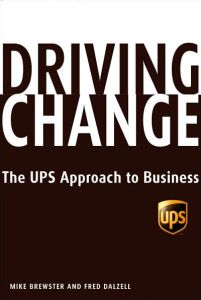Join getAbstract to access the summary!

Join getAbstract to access the summary!
Mike Brewster and Fred Dalzell
Driving Change
The UPS Approach to Business
Hyperion, 2007
What's inside?
To be a world leader, some companies invent new products. Others, like UPS, reinvent themselves.
Recommendation
The history of UPS is a century-long story about a visionary founder, Jim Casey, who took a simple idea and made it grow, forging a global delivery, logistics and transportation network. He built an exceptional company that recognizes the critical role of its employees and the need for constant renewal. Mike Brewster and Frederick Dalzell were given complete archival access ("warts and all," they say, although the book is very positive) to create this corporate biography for the company's 100th anniversary. They cover UPS's history and development, detailing Casey's visions and methods, and showing how UPS has become a leader in global shipping and logistics. Their enjoyable, informative book is as much an industrial engineering story as it is the biography of a company that has continually reinvented itself. getAbstract recommends it to businesspeople who want to see how diligent leaders built a global company.
Summary
About the Authors
Mike Brewster is a business writer and the author of Unaccountable and King of Capital. He and historian Frederick Dalzell are part of a consulting firm specializing in historical research and archival services for organizations. Dalzell’s other books include Changing Fortunes and Rising Tide.

















Comment on this summary